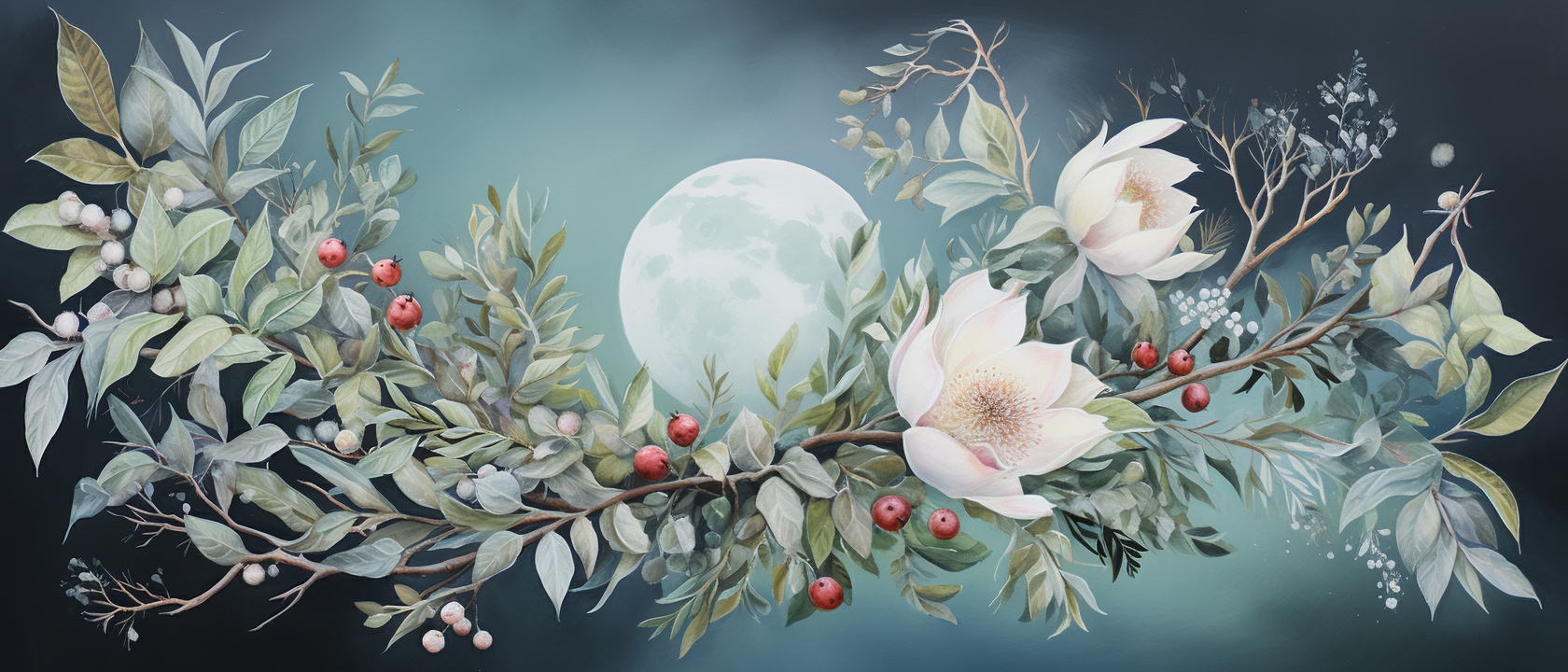
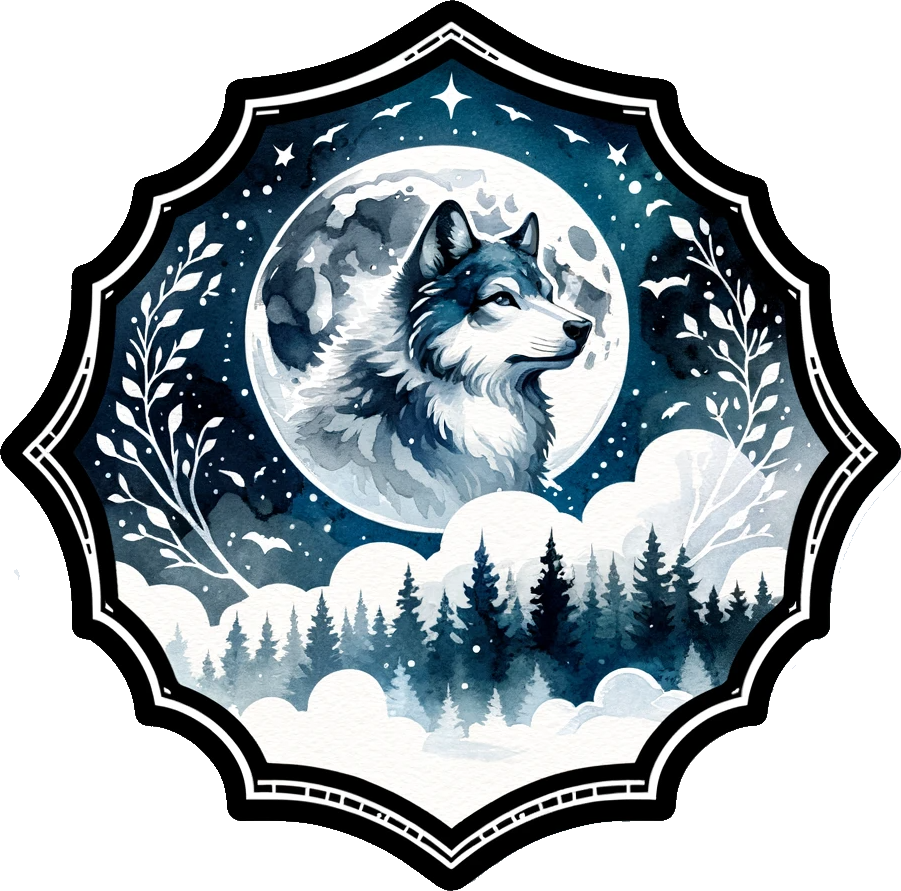
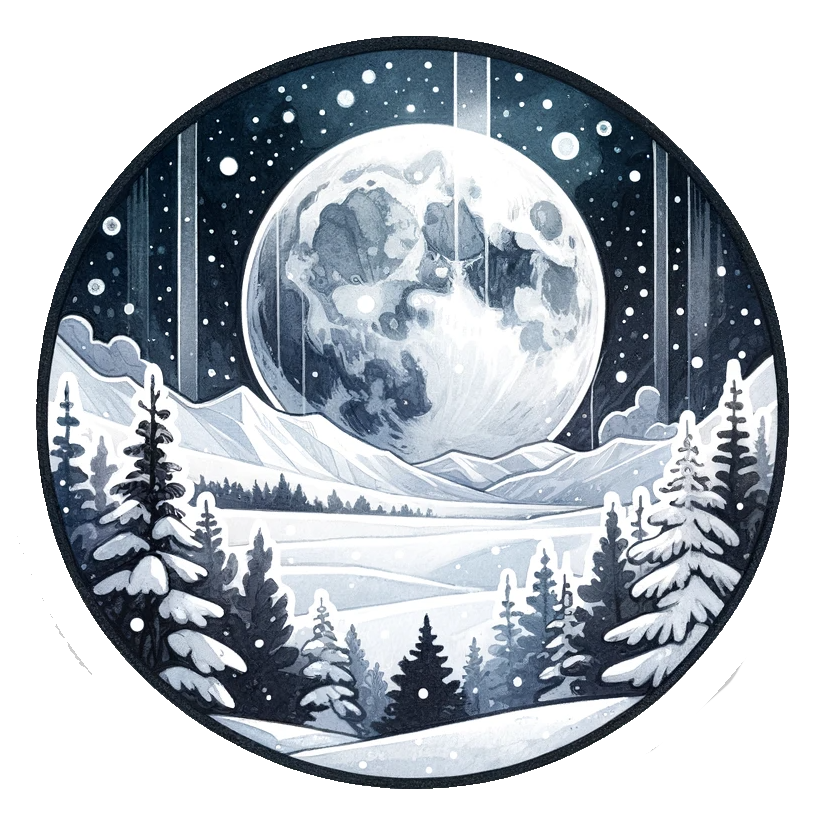
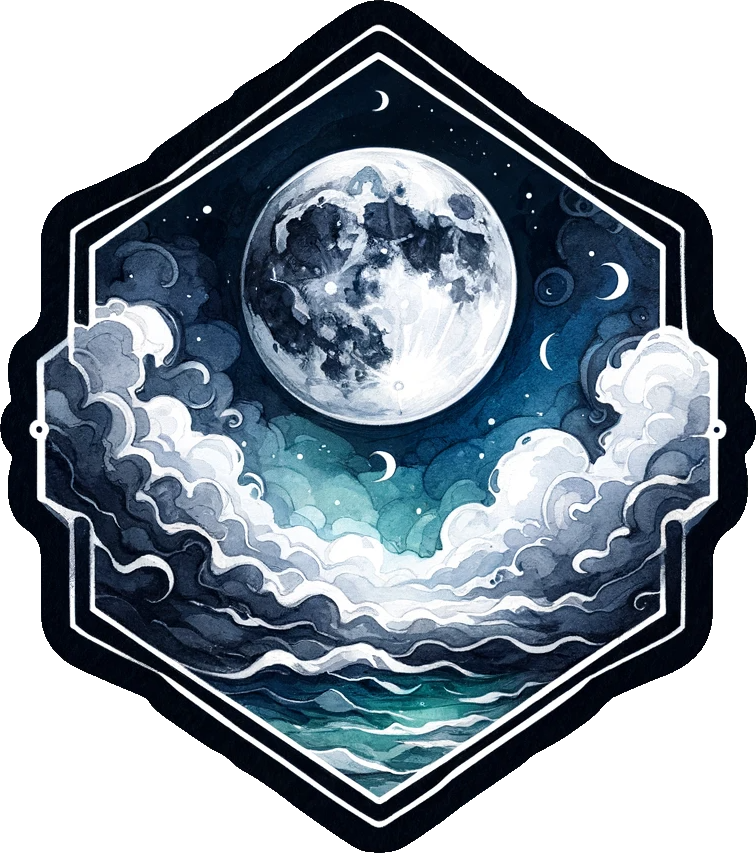
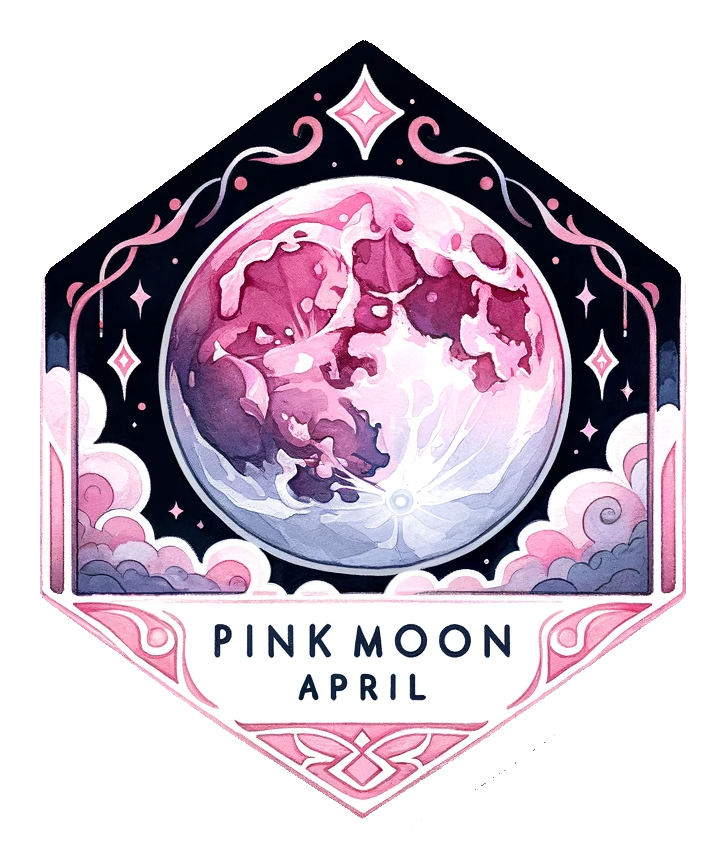

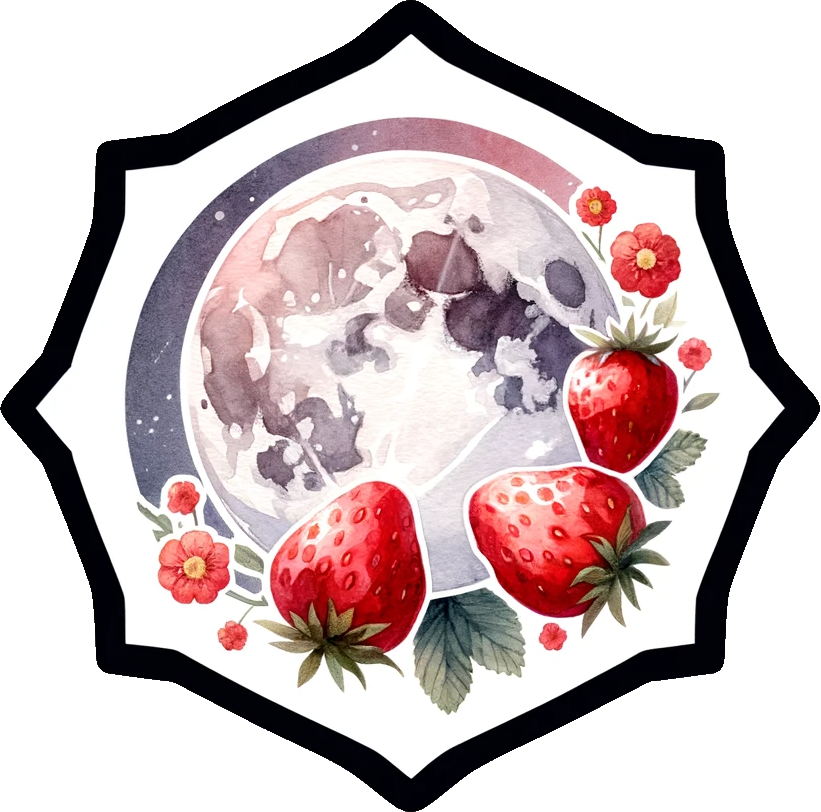
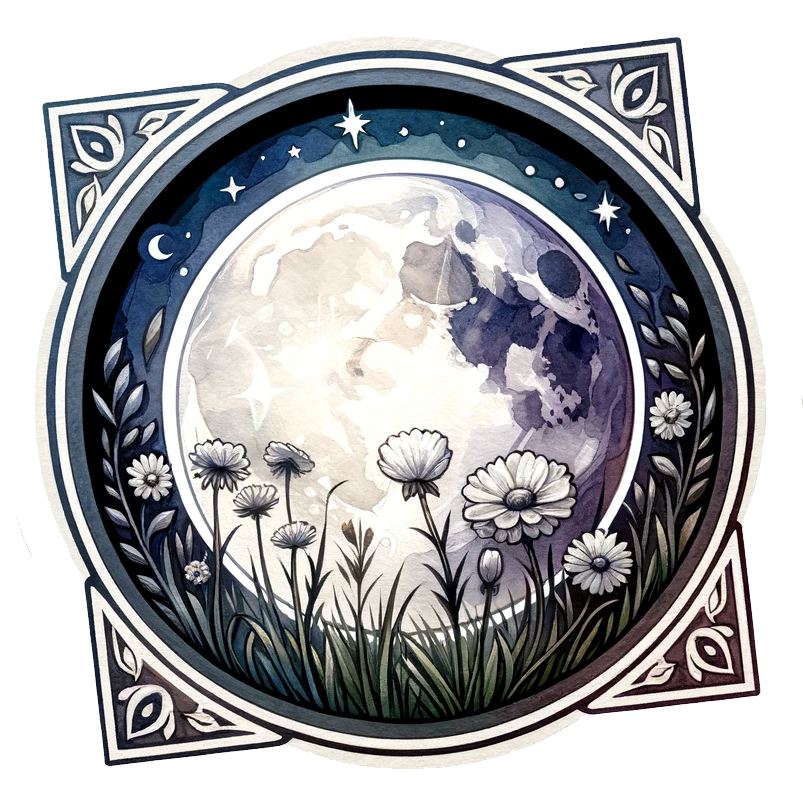
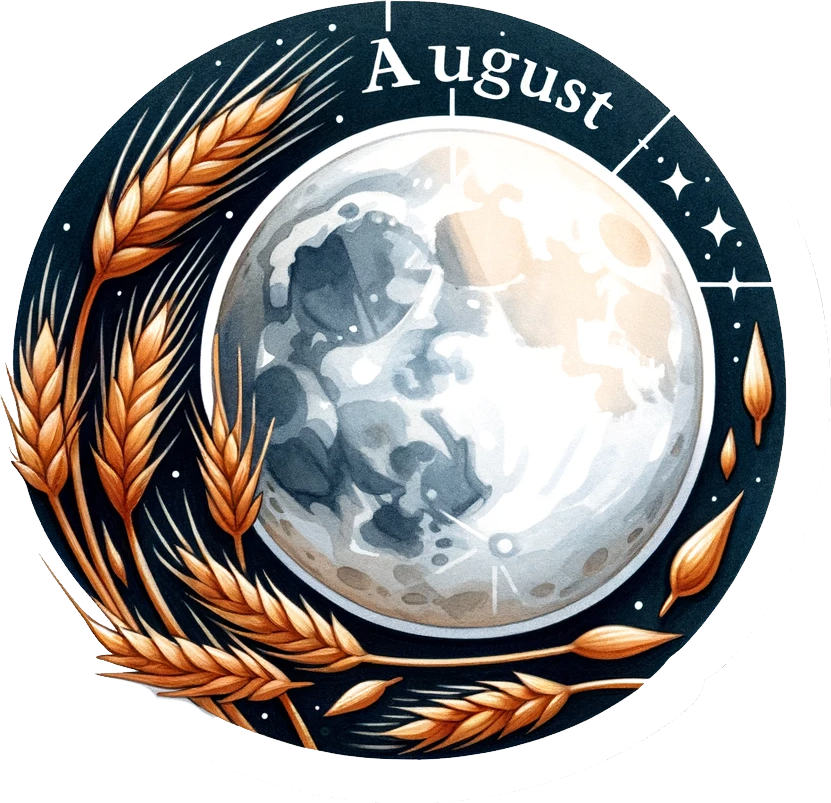
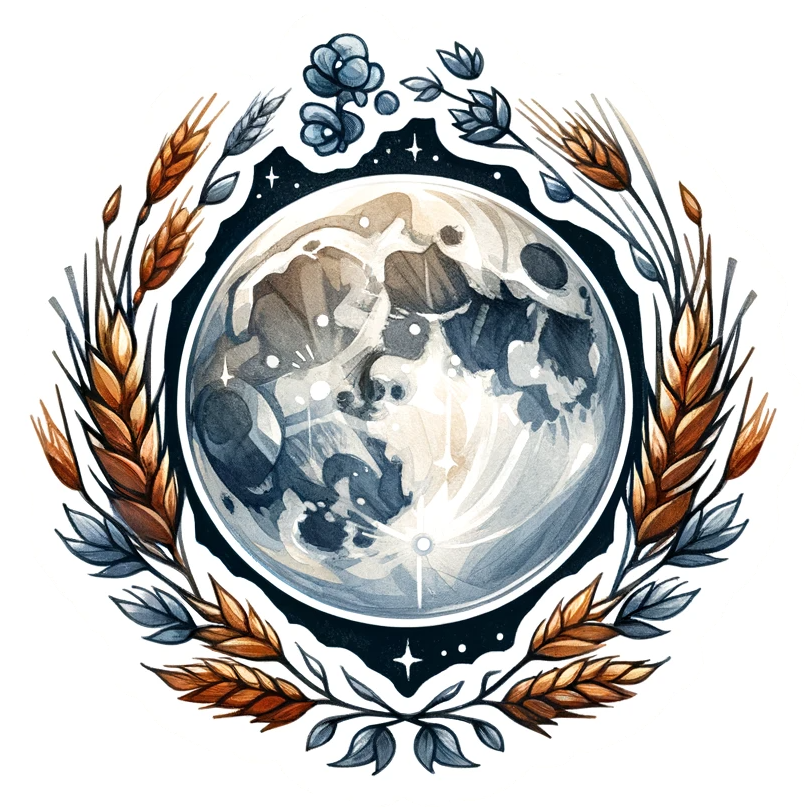
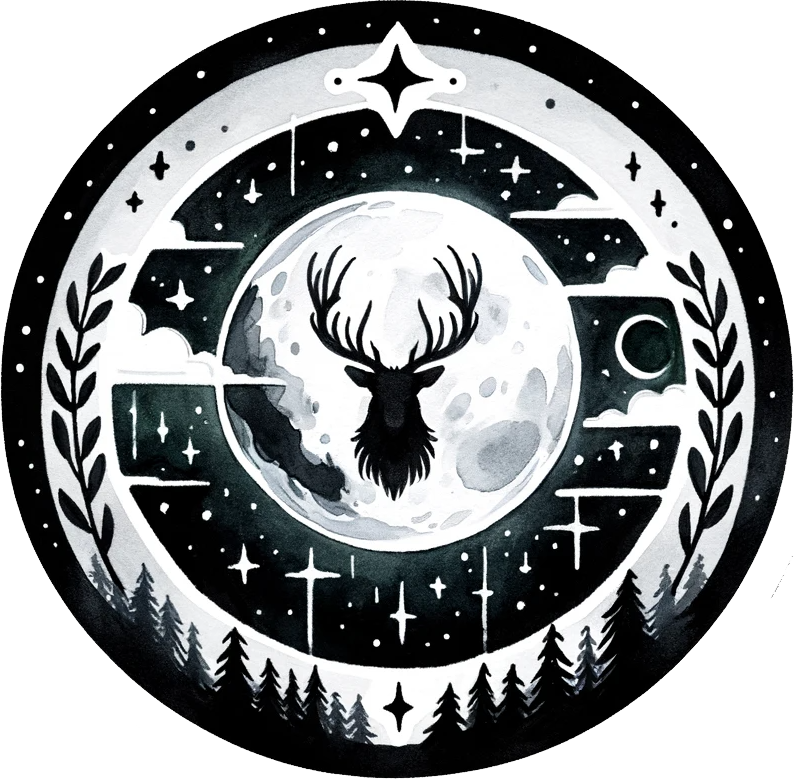
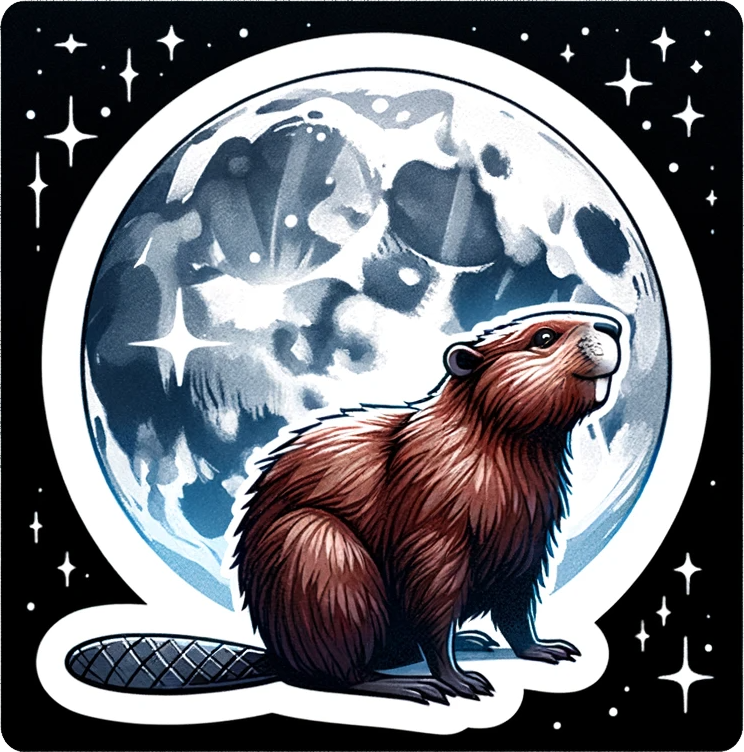
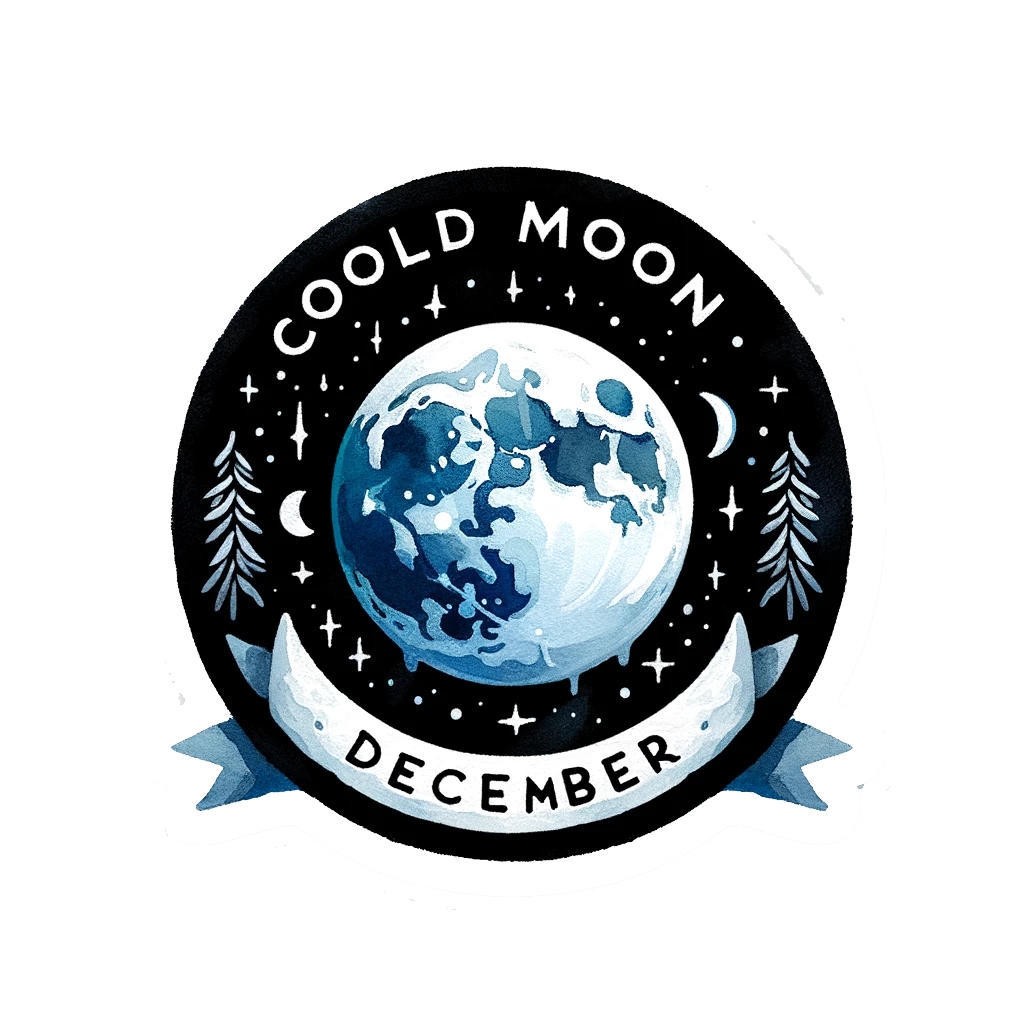
The Moon’s mysterious presence in the night sky evoke wonder and awe. Beyond its beauty, the Moon holds significant meaning and power in various cultures and traditions around the world. The 12 full moon meanings explores the ancient connection between lunar phases and the rhythms of nature. Each with a deeper esoteric symbology woven into the fabric of time.
Understanding the Moon’s influence has been integral to spiritual practices, from astrology and Wicca to paganism and Moon worship. With a continuous cycle that resonates with the ebb and flow of our own lives, the Moon is a powerful ally in the art of manifestation and magic.
In this article, we will dive into the 12 Full Moon Names and their unique meanings along with the significance of these Moon phases in Moon Magick. Additionally, I’ll teach you how we can incorporate these into Moon Magic rituals and correspondences for a rich spiritual practice.
Stickers are now available in the shop!
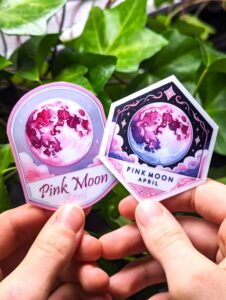
The names given to each full moon have roots in Native American, Anglo-Saxon, and Germanic month names. These names often reflect the natural phenomena or the social activities that took place during that time within these cultures.
The howling of wolves in the cold and deep midwinter is believed to have inspired the name Wolf Moon. It signifies a time of protection, conservation of resources, and the presence of community.
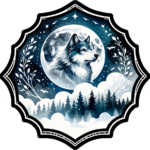
Marking the typically snow-blanketed landscapes of February, the Snow Moon represents purity, transformation, and the anticipation of growth. For those interested in celebrating the seasonal transitions, learning how to celebrate imbolc can be a wonderful way to honor the midpoint between winter and spring. Imbolc, often celebrated on February 1st or 2nd, is a festival that marks the beginning of the end of winter, symbolizing light and new beginnings, much like the Snow Moon.

As the winds of change swirl, the Storm Moon ushers in the promise of rebirth and the washing away of the old. This is a perfect time to explore how to celebrate ostara, the spring equinox festival that symbolizes renewal and balance. Ostara, typically celebrated around March 20th, is a time to honor the equal length of day and night, and to welcome the growing light and new life that spring brings.

Named after the wild ground phlox, which covers the ground like a pink blanket, the Pink Moon heralds the first appearance of flowers and the true beginning of spring.
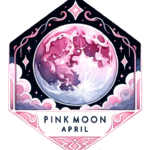
The Flower Moon is a testament to the explosion of blossoms and the fertile earth, symbolizing abundance, beauty, and the nurturing aspect of nature.
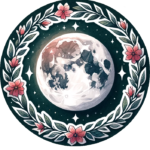
As strawberries come into season, the Strawberry Moon signals the time for picking fruits that we have carefully tended to during the year. Both literally and metaphorically! Enjoy the fruits of your labor. This period also aligns with the summer solstice, a time of abundance and celebration. For those looking to deepen their connection with the season, celebrating litha offers a guide to honoring the longest day of the year with rituals that celebrate light, growth, and the peak of summer.

The lush green meadows of July are reflected in the Meadow Moon, representing the peak of summer’s warmth, prosperity, and the nurturing energy of the Mother Goddess.

Barley is one of the first grains to be harvested this time of year. This marks a time of gathering and gratitude for the gifts of the land.
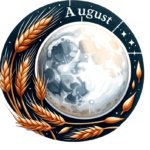
Perhaps the most famous of them all, the Harvest Moon, corresponds with the time of year when the last of the crops are being harvested and stored for the long winter ahead.

After the fields have been reaped, hunters could easily see the animals that have come to scavenge, leading to the naming of the Hunter’s Moon—a time for stocking up and preparing.
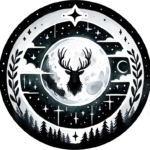
During this time, beavers are busy preparing for winter. It is a time for us to ensure that our own necessities are secured. Reflecting on the industrious nature of beavers, we can also learn life’s lessons from our animal guides. Animals, like the beaver, teach us about preparation, hard work, and the importance of building a secure foundation. By observing and connecting with animal behavior, we can gain insights and inspiration for our own lives.

With the onset of winter chill, the Cold Moon embodies the essence of taking refuge from the cold, introspection, and the gathering of our own inner strength and wisdom.
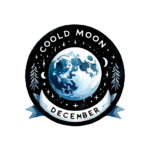
These names remind us that our lives are reflected in nature’s cycles and provide a framework for the intentions we might set within each lunar cycle. Engaging in moon magic using these names can foster a deeper connection with the energies present at different times of the year.
Each phase of the Moon has its special energy which can enhance various aspects of Moon Magick:
Moon phases have deep-rooted symbolism across different cultures, and learning about moon symbolism, moon rituals, and moon folklore can help one tap into their power. With new moon magic and full moon celebrations, practitioners harness these energetics for personalized spiritual or magical goals.
For those fresh to the concept of Moon Magick or looking for ways to deepen their practice, the cyclical transformations of the moon can be uniquely enriching. As we explore Moon Magic books, Moon Magic oils, or create Moon Water, we connect with an ancient lineage of Moon deities and Moon mythology that has guided humanity for millennia.
Creating Full and New Moon rituals for intention setting and manifestation can be a profound way to tap into lunar energy. The Moon’s current sign in astrology can also influence the potency of your rituals. For example, a Full Moon in Scorpio might underline transformation and healing, while a New Moon in Gemini could emphasize communication.
Moon magic rituals could include Moon meditation, making Moon water, or Moon divination, like using Moon tarot to gain insights. It’s essential to consider the Moon sign and Lunar phase as you perform rituals to ensure alignment with your intentions.
Incorporate Moon magic candles, Moon magic incense, or Moon magic symbols for an even more powerful ritual. Use moonstone and other Moon magic crystals to amplify the Moon’s energy and assist with your intention.
A fundamental aspect of Moon Magick involves understanding and utilizing various correspondences. These correspondences can include:
Combine the knowledge of these correspondences with the Moon phase to create personalized Moon magic spells that resonate deeply with your spiritual goals.
Understanding the Moon Names Magick and Meaning can be a beautiful practice filled with reverence and power. We can link ourselves to an eternal cycle that has guided humans throughout history by partaking in esbat celebrations. In other words, tailoring our rituals with the patterns of the lunar cycle. Remember that the dance between Earth and its lunar companion is timeless.
Whether you dabble in Moon magic herbs, Moon magic crystals, or simply sit under the moon’s silvery light in contemplation, embracing Moon magic manifestation techniques can be a transformative experience.